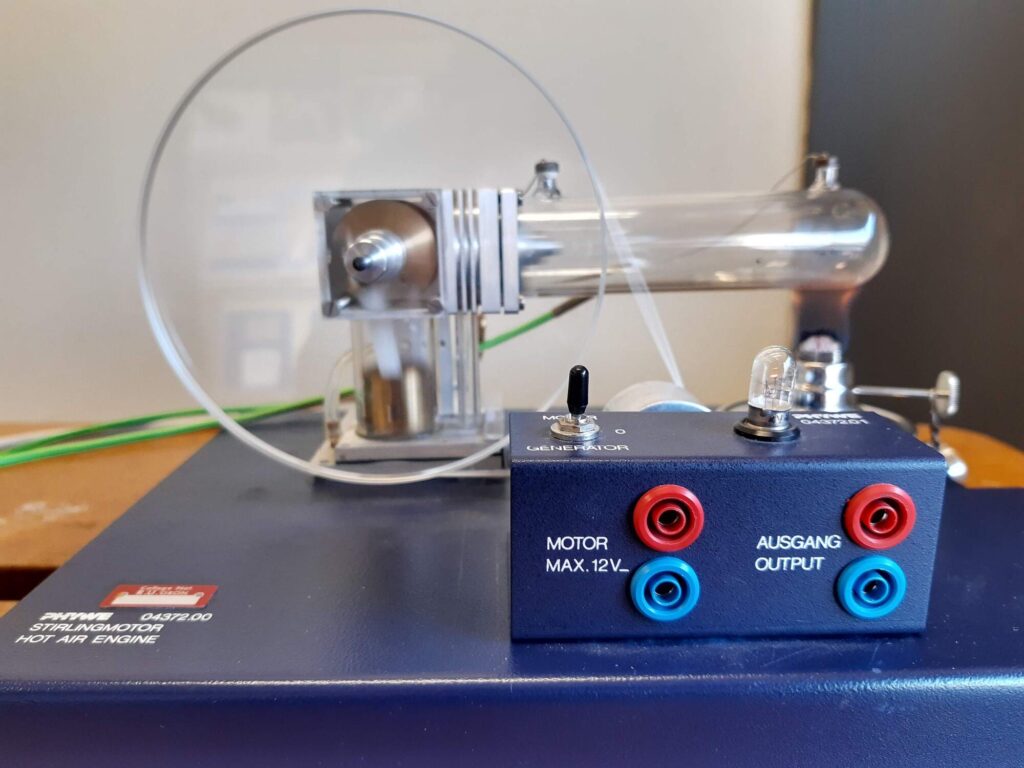4F30.10 - Stirling Engine
- Description
This demonstration shows energy conversion from heat to electrical in the Carnot cycle. Through varying the flame intensity, it can show that the work done by the system varies with the temperature difference and thus the heat input. Through the generator, it also shows that useful work can be extracted from the system.
- Equipment
- Stirling engine
- Spirit burner and spirit
- p-V-n-T measurement unit
- Thermal probes
- How to assemble and operate
- 1. Hook up all the cables, the gray one from the stirling engine in the p-V-n socket, and the thermal probes in the T1 and T2 sockets (mind the polarity!)
- 2. Calibrate the thermal probes by pressing the ΔT button and then pressing the V button
- 3. Place the thermal probes in the holes on either side of the cylinder. The temperature on each end of the cylinder can now be shown on the measurement unit. Alternatively, the temperature difference can be shown instead of T1 by pressing the display button
- 4. Place a small amount of fuel in the burner, close it back up, and put it under the end of the cylinder
- 5. Light the burner, the flame can be adjusted with the knob on the side
- 6. The stirling engine will be ready to run once the temperature difference reaches about 80-90 degrees, start it by giving the wheel a good twist
- 7. Adjusting the flame height will (after a while) change the temperature difference and through that the rpm of the engine
- 8. If the engine is connected to the generator, you can switch the switch to generator mode to show the light bulb lighting up.
